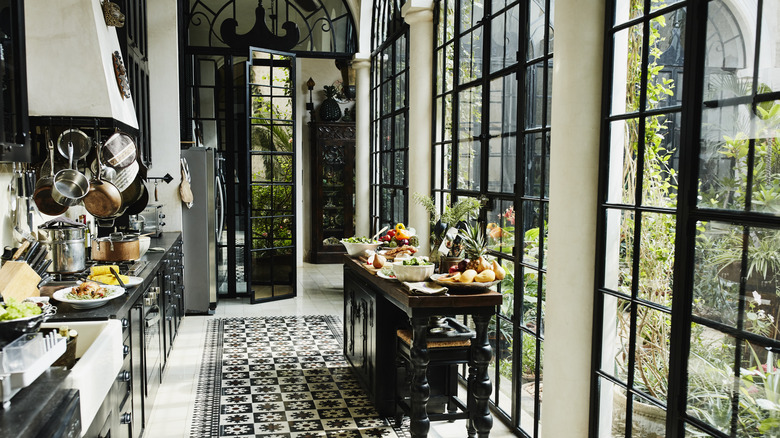
"A dirty kitchen, also known as a scullery kitchen or second kitchen, is an extra room located at one end of the kitchen. It was incorporated into European kitchens in medieval times and remained popular throughout the Victorian era. There were many purposes of a second kitchen: to create a place where staff could prepare food and clean up after a meal, as well as wash dishes, food, and kitchen linens."
"Incorporating British kitchen design trends like a scullery into your kitchen renovation can make the space practical and functional as well as beautiful. A dirty kitchen or scullery allows you to keep the biggest messes out of the main part of your kitchen. If you use your kitchen a lot or regularly host dinner parties or events, having a dirty kitchen is like having a secret closet that you can hide messes away in."
Modern homes often reincorporate vintage features such as the scullery, a secondary kitchen space. A scullery originated in medieval European kitchens and remained common through the Victorian era. Typical functions included food preparation by staff, post-meal cleanup, and washing dishes, food, and linens. Variants appeared outside Europe, for example the Filipino outdoor dirty kitchen that kept heat, smoke, mess, and odors out of the house. Kitchen remodeling requires careful planning to assess daily usage and pain points, determine whether extra scullery space is needed, and set an appropriate remodel budget. A scullery keeps major messes out of the main kitchen and supports frequent cooking and entertaining.
Read at Tasting Table
Unable to calculate read time
Collection
[
|
...
]